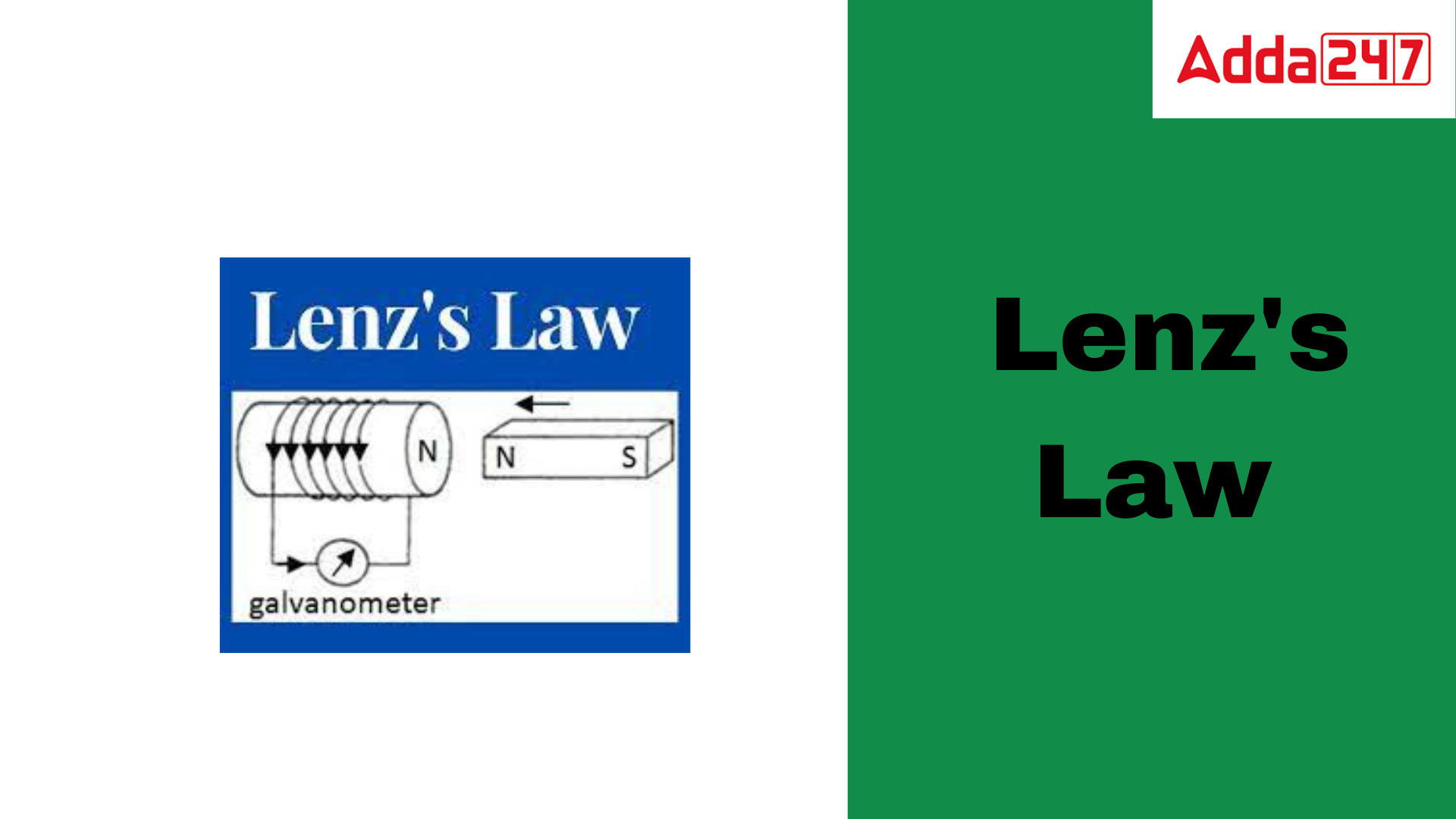Lenz’s Law Definition
Lenz’s Law: “The direction of the current induced in a conductor by causing the change in the magnetic field is such that the magnetic field generated by the induced current opposes the initial magnetic field which produced it,” according to Lenz’s law. Fleming’s right-hand rule determines this current’s direction. Physicist Emil Lenz invented this law in 1834. This law is based on Faraday’s law of electromagnetic induction. Lenz’s qualitative law states the direction of the induced current but not its magnitude.
Lenz’s Law
Lenz’s law is a physical law that specifies the direction of an induced current in a conductor. According to the rule, the direction of the induced current opposes the change in magnetic flux that caused it.For example, if a magnet is brought close to a wire coil, the magnet’s magnetic field lines will cut through the coil, producing a current in the coil. The induced current will be directed in such a way that it forms a magnetic field that opposes the magnetic field of the magnet. As a result, the coil will repel the magnet.The law of conservation of energy leads to Lenz’s law. The magnetic flux through the coil increases when the magnet is brought close to the coil. This rise in magnetic flux represents an energy change. The induced current in the coil resists this shift in energy, resulting in energy conservation.Lenz’s law is a fundamental electromagnetic law with several applications in electrical engineering and other industries. For example, Lenz’s law is used to describe how electric motors and generators work.
Lenz’s law Formula
According to Lenz’s law, “the direction of the current induced in a conductor is opposite the direction of the magnetic field.” This law is comparable to the conservation principle and Newton’s third law of motion. The formula for Lenz’s law is as follows:
EMF = N(B/t).
Where,
EMF stands for Electromagnetic Field.
N is the number of coils.
B is the magnetic flux change.
t = Time difference
Lenz’s Law Applications Examples
Here are some examples of Lenz’s law in action:
- Electric motors transform electrical energy into mechanical energy. An electric motor works on the basis that a current-carrying coil in a magnetic field senses a force. Fleming’s left-hand rule determines the force’s direction.
When the coil’s current is turned on, it feels a force that causes it to rotate. The magnetic field of the coil opposes the magnetic field of the permanent magnet due to its rotational orientation. This is consistent with Lenz’s law. - Generators are devices that transform mechanical energy into electrical energy. The basic idea of a generator is that when a coil in a magnetic field is turned, it generates electricity. Fleming’s right-hand rule determines the current direction. When the coil is rotated, the magnetic field lines cut through it, causing a current to flow. The induced current’s direction creates a magnetic field that opposes the change in magnetic flux that caused it. This is consistent with Lenz’s law.
- Electromagnetic brakes: Electromagnetic brakes create braking force using Lenz’s law. When a current is applied to a coil in a magnetic field, the coil encounters an opposing force. This force can be utilised to slow down or stop a moving item.
- Inductive cooktops: Inductive cooktops heat food using Lenz’s law. A magnetic field is created when a current is applied to a coil in an inductive hob. This magnetic field creates a current in the pan on the hob. The current in the pan warms the pan, which in turn warms the food.
- Metal detectors detect metal objects by employing Lenz’s law. When a metal object is placed near a metal detector, the metal detector’s magnetic field induces a current in the metal object. This current generates a magnetic field that is diametrically opposed to the magnetic field of the metal detector. The metal detector detects a change in the magnetic field of the metal detector, indicating the presence of a metal object.
Lenz’s Law Experiment
Lenz’s law is commonly used to determine the direction of the induced EMF and current. So the experiment with Lenz’s law is-
- The magnetic field is formed as the current in the coil flows. As the current flow increases, so does the magnetic flux. However, the current flows in the opposite direction of the magnetic field.
- Second Experiment: He concluded that when the current-carrying coil is wound on an iron rod with its left end facing coil S, it behaves as an N-pole and produces an induced current.
- 3rd Experiment: He concluded that when the coil is drawn towards the magnetic flux, the coil linked to it shrinks, implying that the coil’s area shrinks inside the magnetic field.









 MGSU Result 2025 Out, Download Maharaja ...
MGSU Result 2025 Out, Download Maharaja ...
 EMS Results 2025 OUT at gnanasangama.kar...
EMS Results 2025 OUT at gnanasangama.kar...
 How to Calculate CUET Score, Check Marks...
How to Calculate CUET Score, Check Marks...









